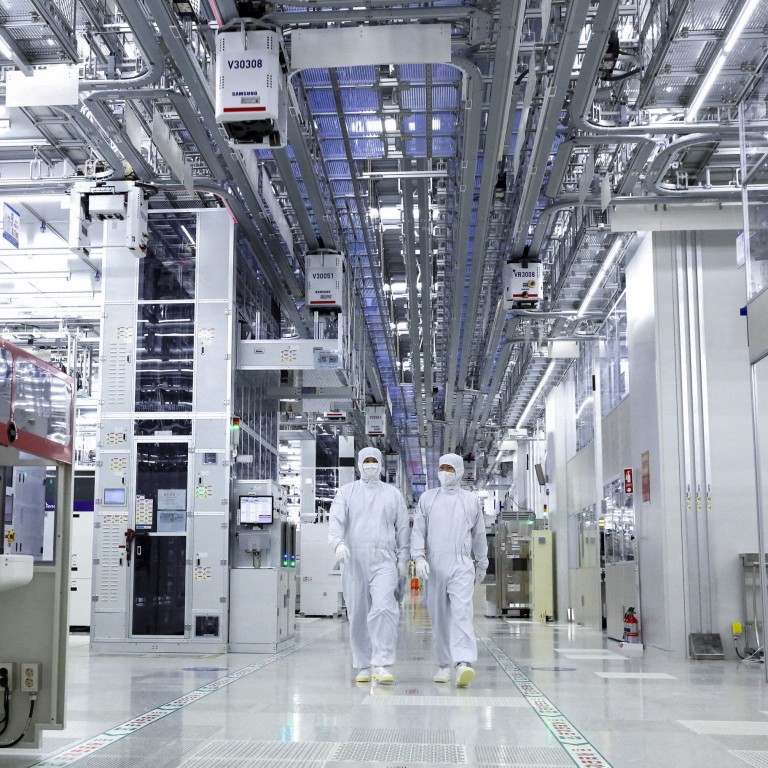
Tech war: US chip restrictions could cost 0.6 per cent of China’s GDP and weigh on yuan, according to Barclays report
- Barclays says while costs are ‘manageable for now’, impact could worsen if US restrictions are widened
- In a worst-case scenario, the economic costs for China could widen to 3 per cent of GDP and a 7 per cent hit to yuan against US dollar
US restrictions on China’s semiconductor industry could cost up to 0.6 per cent of China’s gross domestic output and weigh on the yuan’s value against the dollar by 3 per cent if escalated further, according to a research note by Barclays.
While the impact is “manageable” for now, US controls on semiconductor exports to China could have a substantial effect on the country’s output and currency if the restrictions are widened to “lower-end semiconductors” or involve supplies from other countries, Barclays economists including Jian Chang, Yingke Zhou and Rahul Bajoria wrote in a note published on Wednesday.
In a worst-case scenario, the economic costs for China could widen to 3 per cent of GDP and a 7 per cent hit to the value of the Chinese currency against the dollar, according to Barclays estimates.
Xi Jinping opens China’s internet conference, attended by US tech CEOs
“Controls on US semiconductor exports to China are part of a broader strategic agenda that, although manageable for now, could have substantial effects on China’s output and currency if escalated further,” according to the research note.
Citing concerns that hi-tech items could strengthen China’s military, the Bureau of Industry and Security, under the US Commerce Department, unveiled on October 7 a raft of updates to its existing hi-tech export control rules. The new rules further restrict China’s access to off-the-shelf high-end logic and memory semiconductors above certain technical thresholds, and the equipment to make them domestically.
The Post previously reported that the latest restrictions are the most extensive in years, with many analysts saying that they could spell the end for high-end semiconductor fabrication in China if the country cannot find replacements for US-origin technology.
The Barclays report states that the latest restrictions can be seen “as part of a broad set of strategic objectives aimed at maintaining the status quo in Taiwan, reducing US dependence on China in key sectors, and making China’s tech position in the world less asymmetric”.
China’s chip output records biggest monthly decline in October on weak demand
US and China relations have soured in recent years amid tech and trade tensions, with both telecoms titan Huawei Technologies Co and Semiconductor Manufacturing International Corporation, China’s top foundry, added to a US trade blacklist known as the Entity List
After President Biden took office in 2021, rather than dialling down Trump era restrictions, the US has increased tech controls and rolled out a massive US$53 billion plan to revive chipmaking on US soil.
Barclays estimated that tariff and non-tariff measures adopted by the US since 2017 have likely cost China more than US$100 billion. And although current US restrictions do not prevent logic chips less advanced than 14-nanometre or 14-nm chip-making tools from being shipped to China, the country’s semiconductor fortunes look increasingly precarious, say analysts.
The bank also warned that substantial risks remain if potential US restrictions are widened to “lower-end semiconductors or chips for commercial and civilian use, or to involve supplies from other countries”.
Barclays states that China is likely to focus on boosting self-reliance in semiconductor technology as it has limited options for retaliation, according to the report.

